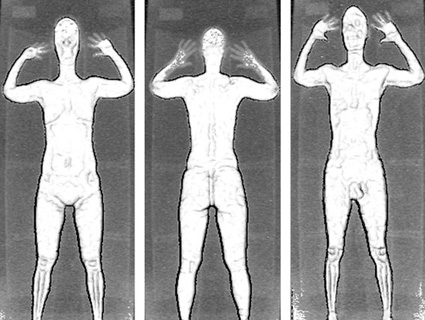
Airport X-ray scanner image.Credit: <a href="http://www.tsa.gov/approach/tech/ait/how_it_works.shtm">TSA</a>.
Citing health concerns, the European Union banned from European airports this week the same kind of X-ray scanners used by TSA in airports across the US. Here’s the EU’s wording:
In order not to risk jeopardising citizens’ health and safety, only security scanners which do not use X-ray technology are added to the list of authorised methods for passenger screening at EU airports.
In How Safe Are TSA’s Porno Scanners? I wrote about the risks of using ionizing radiation in routine airport screenings. Concerned scientists have noted the health risks of X-ray scanners, where even low levels of radiation increase cancer risks. They also note that TSA’s safety testing is flawed, since:
- testing is not done on the skin, which receives most backscatter X-rays
- the devices used for testing airport scanners are not designed for testing airport scanners
Worse, as Pro Publica points out, TSA’s safety tests are strangely obtuse:
The researchers’ names have been kept secret, and the report on the tests is so “heavily redacted” that “there is no way to repeat any of these measurements.”
European airports can still use alternative body scanners, including millimeter-wave scanners that use radio frequency waves not linked to cancer.
Some 500 body scanners are in use in the US, reports Pro Publica. About half are backscatter X-ray scanners, which look like a pair of large blue boxes. The other half are millimeter-wave scanners, which look like a round glass booth. The X-ray scanners are in use at major airports including Los Angeles International, New York’s JFK, and Chicago’s O’Hare. Millimeter-wave scanners are in use at San Francisco, Atlanta, and Dallas.















